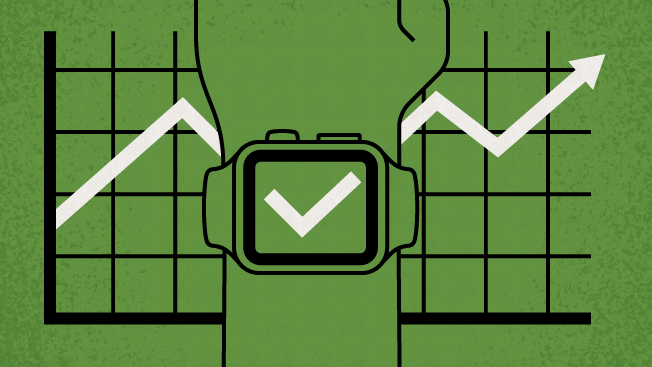Once derided by skeptics as a superfluous gadget, the smartwatch is now demonstrating its unique value to customers and marketers alike. Watch-wearers will soon be able to make purchases, track vital health metrics and keep on top of news and messages, all without ever reaching for a smartphone. For marketers, this makes for an enticing addition to the cross-channel mix, thanks to behavioral data that other channels can’t capture.
Seventy seven percent of smartwatch owners and aspiring smartwatch owners think it would be helpful to receive personalized in-store notifications while shopping, according to an Adobe Digital Index. And retailers are already experimenting with geolocation to offer coupons or promote impulse buys when a smartwatch-wearing consumer strolls past a display. But while push notifications can surface timely offers, relevance will be more critical than ever. Buzz a dieter’s wrist with a pizza offer at your own peril.
“Push is intimate. It’s the ultimate way to get close to your customers,” says Adobe Campaign’s Mickael Bentz, who goes on to caution marketers against pushing too hard or too often.
Alternatively, brands that are equipped to learn from smartwatch data about what does and doesn’t work will be able to make a direct impact across other channels. For example, a brand that knows the sleeping and fitness routines of its customers will be able to personalize both the timing and the content of its messaging. A clothing retailer may surface different emails or mobile ads to a gym rat than to a couch potato. And even without tapping health or location, marketers will learn valuable cross-channel lessons by studying the messages that inspire user activity.
Because there is no room for marketing fluff on a smartwatch’s small display, new styles of messaging are likely to have a ripple effect across other channels, resulting in more concise and pithy offers. While mobile devices have given us all shorter attention spans, perhaps smartwatches will have the positive side effect of forcing marketers to be more direct and creative across other channels. This is something publishers such as the New York Times have taken to heart with one-sentence news ’emojinews.’
Whether promoting on the smartwatch itself, just gleaning the data or both, marketers should be bullish on its potential. “The interest level is still very high. People are figuring out how the device fits into their business,” Michael Koziol, managing director at Huge, said in July. “The opportunities are immense.” IHS Technology predicts 100 million smartwatches shipped by 2020. Advertising spend will follow suit, nearing $70 million by the close of the decade.
Even if your clients aren’t yet clamoring for a smartwatch campaign, watches and other wearables should be included in your cross-channel strategy. In fact, no other channel is better positioned to provide such a data-rich understanding of the daily lives of your customers.
While some think that it’s just too soon to integrate smartwatches into a cross-channel campaign, the fact is many marketers are acting on it now. The next time you’re in a meeting and you get a notification buzzing on your wrist, perhaps that bite-sized promotion was a well-played cross-channel strategy by your colleague sitting next to you.









